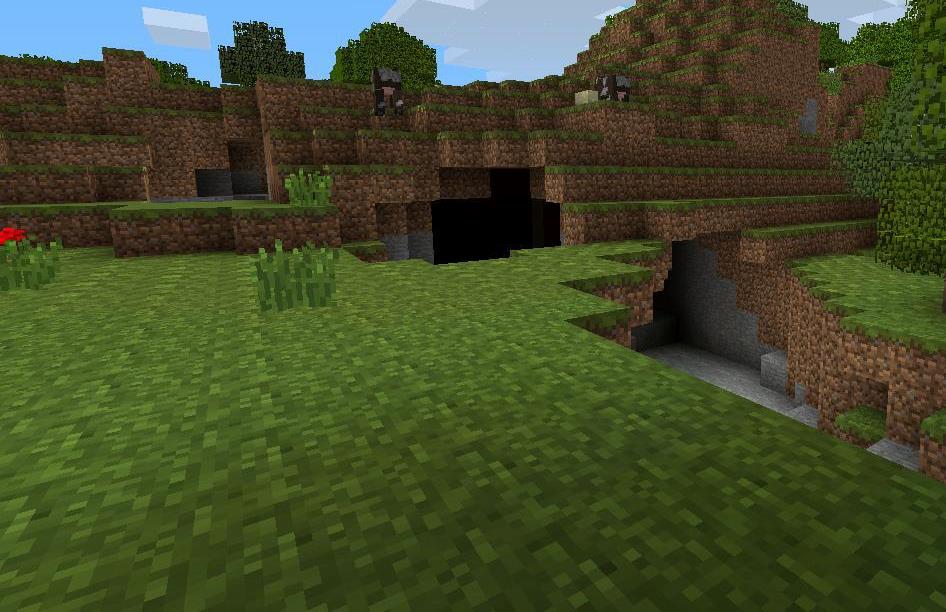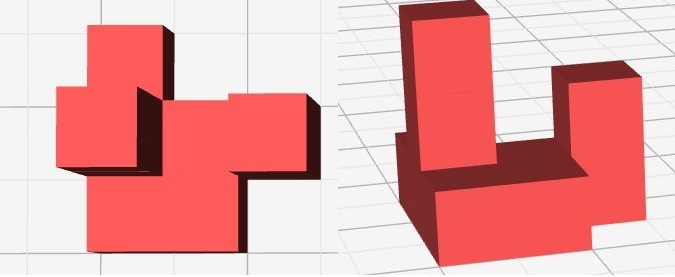House Building
Time Limit: 2000/1000 MS (Java/Others) Memory Limit: 262144/262144 K (Java/Others)
Total Submission(s): 1808 Accepted Submission(s): 1138
Problem Description
Have you ever played the video game Minecraft? This game has been one of the world's most popular game in recent years. The world of Minecraft is made up of lots of 1×1×1 blocks in a 3D map. Blocks are the basic units of structure in Minecraft, there are many types of blocks. A block can either be a clay, dirt, water, wood, air, ... or even a building material such as brick or concrete in this game.

Figure 1: A typical world in Minecraft.
Nyanko-san is one of the diehard fans of the game, what he loves most is to build monumental houses in the world of the game. One day, he found a flat ground in some place. Yes, a super flat ground without any roughness, it's really a lovely place to build houses on it. Nyanko-san decided to build on a n×m big flat ground, so he drew a blueprint of his house, and found some building materials to build.
While everything seems goes smoothly, something wrong happened. Nyanko-san found out he had forgotten to prepare glass elements, which is a important element to decorate his house. Now Nyanko-san gives you his blueprint of house and asking for your help. Your job is quite easy, collecting a sufficient number of the glass unit for building his house. But first, you have to calculate how many units of glass should be collected.
There are n rows and m columns on the ground, an intersection of a row and a column is a 1×1 square,and a square is a valid place for players to put blocks on. And to simplify this problem, Nynako-san's blueprint can be represented as an integer array ci,j(1≤i≤n,1≤j≤m). Which ci,j indicates the height of his house on the square of i-th row and j-th column. The number of glass unit that you need to collect is equal to the surface area of Nyanko-san's house(exclude the face adjacent to the ground).

Nyanko-san is one of the diehard fans of the game, what he loves most is to build monumental houses in the world of the game. One day, he found a flat ground in some place. Yes, a super flat ground without any roughness, it's really a lovely place to build houses on it. Nyanko-san decided to build on a n×m big flat ground, so he drew a blueprint of his house, and found some building materials to build.
While everything seems goes smoothly, something wrong happened. Nyanko-san found out he had forgotten to prepare glass elements, which is a important element to decorate his house. Now Nyanko-san gives you his blueprint of house and asking for your help. Your job is quite easy, collecting a sufficient number of the glass unit for building his house. But first, you have to calculate how many units of glass should be collected.
There are n rows and m columns on the ground, an intersection of a row and a column is a 1×1 square,and a square is a valid place for players to put blocks on. And to simplify this problem, Nynako-san's blueprint can be represented as an integer array ci,j(1≤i≤n,1≤j≤m). Which ci,j indicates the height of his house on the square of i-th row and j-th column. The number of glass unit that you need to collect is equal to the surface area of Nyanko-san's house(exclude the face adjacent to the ground).
Input
The first line contains an integer T indicating the total number of test cases.
First line of each test case is a line with two integers n,m.
The n lines that follow describe the array of Nyanko-san's blueprint, the i-th of these lines has m integers ci,1,ci,2,...,ci,m, separated by a single space.
1≤T≤50
1≤n,m≤50
0≤ci,j≤1000
First line of each test case is a line with two integers n,m.
The n lines that follow describe the array of Nyanko-san's blueprint, the i-th of these lines has m integers ci,1,ci,2,...,ci,m, separated by a single space.
1≤T≤50
1≤n,m≤50
0≤ci,j≤1000
Output
For each test case, please output the number of glass units you need to collect to meet Nyanko-san's requirement in one line.
Sample Input
2
3 3
1 0 0
3 1 2
1 1 0
3 3
1 0 1
0 0 0
1 0 1
Sample Output
30
20
Figure 2: A top view and side view image for sample test case 1.

Source
题意:读入n行m列的矩阵,矩阵中存的是i行j列的房子的高度,每个房子是由1*1的砖块构成,问房子的表面积是多少,不包括底面。
思路:因为每个砖块有6个面,所以我们先初始房子总的表面积为总的砖块数*6。
有以下几种情况需要减去表面积:
1:房子与房子之间相邻时,减去它们公共的面的面积。
2:每个位置有房子时,减去底面面积。
3:每个房子上砖块与砖块之间相邻时,减去相邻砖块之间的两个面。
#include<stdio.h> #include<iostream> #include<algorithm> using namespace std; #define N 55 int map[N][N],Next[2][4]={0,1,1,0,-1,0,0,-1}; int main() { int t,m,n,i,j,k,sum,ans,x,y; scanf("%d",&t); while(t --) { scanf("%d%d",&n,&m); sum = ans=0; for(i = 1; i <= n; i ++) { for(j = 1; j <= m; j ++) { scanf("%d",&map[i][j]); sum += map[i][j];//计算总的砖块数 if(map[i][j]> 0)//ans记录底面面积总数 ans ++; } } sum *= 6;//初始化总的表面积 for(i = 1; i <= n; i ++) { for(j = 1; j <= m; j ++) { if(map[i][j] > 0)//房子高度大于0时 sum = sum - (map[i][j]-1)*2;//每个房子上下相邻的砖块有(高度map[i][j]-1)块 for(k = 0; k < 4; k ++)//搜索4个方向 { x = Next[0][k] + i; y = Next[1][k] + j; if(x < 1||y < 1||x>n||y>m) continue; sum -= min(map[x][y],map[i][j]);//减去两个房子相邻的公共部分面积 } } } printf("%d ",sum-ans);//总的表面积减去底面面积 } return 0; }